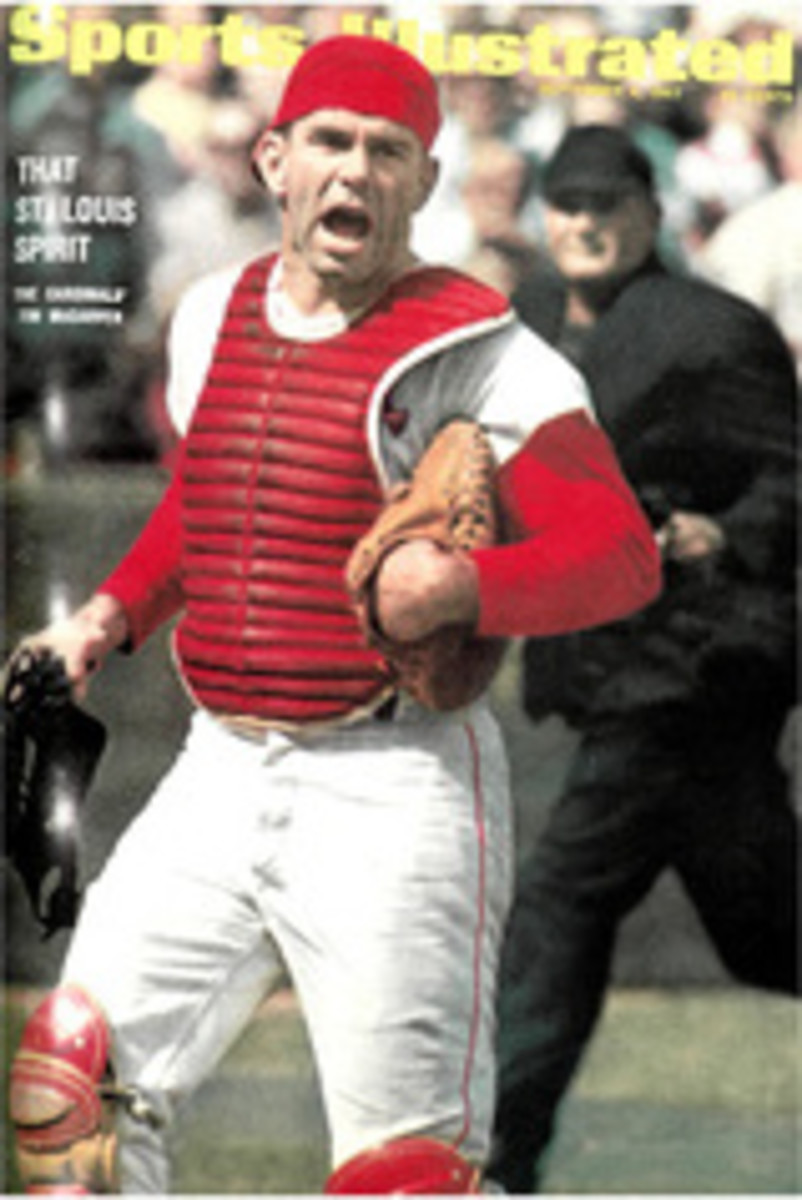
After a Day of Awakening on the Jersey Coast
On a July afternoon 19 years ago in a roped-off bathing area off Eighth Avenue beach in Belmar, N.J., Stanley Meltzoff borrowed a diving mask, dipped his head underwater and saw something moving. He blinked his eyes, took another look and saw a school of 10-pound striped bass swimming along below him.
"My first reaction," says Meltzoff, "was to recall all those wasted years of diving without a mask on the Jersey Shore and during the war in the Mediterranean. My second reaction was more basic. I got a stick, sharpened it at one end and said, 'I'm getting you, you bass.' Lots of luck. I literally worked myself to the point of exhaustion without ever getting close to those fish." The next morning Meltzoff was on the first train to New York City. He went straight to Abercrombie & Fitch, bought himself a mask, flippers, snorkel and a single-band Arbalette spear gun. The following day at Belmar he took his first bass. "It was sensational," he recalls. "By the end of the day I was absolutely paralyzed with cold—I didn't even think about getting a rubber suit. But the very idea that there were real live striped bass in the water brought many shrieks from all the old lady bathers and much glory to me."
Whenever he could get away from his job (teaching history of art in Manhattan), Meltzoff could be found skin diving around the world. But his first love was always the striped bass, and today, at 50, a trim athlete and a successful illustrator, Meltzoff still pursues them up and down the Atlantic coast with all the exuberance of that day of awakening off Belmar. To the small, dedicated group of spearfishermen from New Jersey to Martha's Vineyard, Meltzoff is held in considerable esteem as "the guy who stoned that 65-pound striper," considered the world spear record. (Spearfishermen believe someone, someday, will get a 100-pound striped bass, basing their view on monsters they have glimpsed.)
As a founder and the first chairman of the American Littoral Society, a group of divers and anglers who help ichthyologists tag and count Atlantic fishes, Meltzoff's almost passionate concern for the striped bass goes much further than hunting them with a spear gun.
Meltzoff sometimes goes down for a look as early as February, but the real action begins on the Jersey Shore in mid-April. "The underwater thing is wild and dreamlike then," says Meltzoff. "The inlets are full of flounder, which the bass stack up like flapjacks in their bellies. Herring are moving into the inlets on their spawning runs upstream, and the bass herd them up in the white water and gorge. The bass are fat, happy and highly vulnerable to divers and anglers alike."
By mid-June, when the waters off New Jersey warm up to 70° and the bass move offshore into deeper water, Meltzoff zeroes in on other river populations that have drifted north along the coast.
"Individual schools tend to work an area of perhaps 10 to 15 acres of sea bottom," Meltzoff says, "and a diver will frequently see the same fish day after day for several weeks until they move to another piece of water. Sometimes you can actually recognize the individual bass.
"No matter what the visibility may be, a diver must put in years of time underwater to be able to see more than just the odd bass. We remember those days off Rhode Island when the water was clear and green and we could see down to 25 feet. Usually it's more like four to five feet, which is roughly equivalent to driving at night without headlights. You rarely see a whole bass. Rather, you see a piece of a fish—a head, a tail or little floating specks of gold that flick on and off as the bass move into your range of vision for a moment and then disappear. Often you will see a sort of mirrorlike reflection in the murk as a fish momentarily catches a shaft of light. The stripes running horizontally down their bodies help the bass to orient themselves. Though the stripes sometimes enable a diver to find the fish, they also help the bass to hide."
What is obvious from all this is that Meltzoff's paintings required considerably more than artistic talent. A "picture-maker" by profession, Meltzoff insists on accuracy. Thus, in addition to photographs, which are difficult to come by in striped-bass habitat even under the best conditions, Meltzoff studied freshly caught bass in his studio tank, spent hours gazing and sketching aquarium bass and revisited bass hotspots up and down the coast until he found fish in water clear enough to make a lasting impression on his mind.

